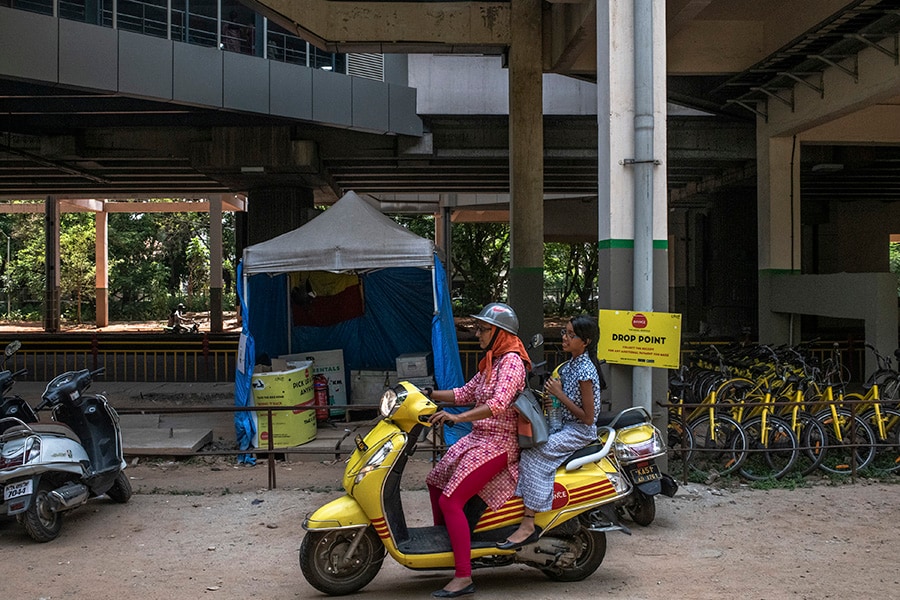
Ride-sharing's future? It may sit on electric motorbikes
Uber prepares to sell as much as $10 billion in stock to help build those vehicles. India, with 1.3 billion residents, is the world's largest market for motorcycles
 Nomita D.P. and her daughter on a rented Bounce scooter after a shopping trip in Bangalore, India.
Nomita D.P. and her daughter on a rented Bounce scooter after a shopping trip in Bangalore, India. Image: Rebecca Conway for The New York Times
BANGALORE, India — In Uber’s vision of the future, self-driving cars will whisk us everywhere, eliminating the need for its millions of human drivers.
But as the ride-hailing giant prepares to sell as much as $10 billion in stock to the public this week to help build those vehicles, a low-tech approach to the self-driving future is emerging in India: motorbikes that customers rent and drive themselves.
Several startups — backed by big Silicon Valley venture firms and Uber’s Indian competitor, Ola — are betting that shared “two-wheelers” are better suited to wallets and transportation needs than the cars that are the heart of the ride-hailing industry.
 Bounce’s chief executive, Vivekananda Hallekere, center, said drivers made ride-hailing services too expensive. “And if users know how to use a scooter, why do you need a driver?” he asked.
Bounce’s chief executive, Vivekananda Hallekere, center, said drivers made ride-hailing services too expensive. “And if users know how to use a scooter, why do you need a driver?” he asked.Image: Rebecca Conway for The New York Times
The traditional model of Uber and Ola is reaching its limits, said Vivekananda Hallekere, a co-founder and the chief executive of Bounce, which fields more than 6,000 motorbikes that people can pick up and drop off anywhere in the southern Indian city of Bangalore. The car rides are too expensive for most Indians, the drivers complain about long hours and poor compensation, and the ride-hailing platforms are struggling to make a profit, he said.
“You can’t make it affordable with a driver,” Hallekere said. “And if users know how to use a scooter, why do you need a driver?”
By focusing on the large swath of people who cannot afford ride-hailing services, these startups are opening up a new front in the global battle to provide shared transportation services. In developed countries like the United States, Uber undercut the taxi industry and created new demand for rides by persuading tens of millions of customers to hop in a car with an ordinary driver summoned by an app. But in developing countries like India, where two-wheeled vehicles outsell cars 6-1, Uber and its competitors must figure out a different approach or risk disruption from below.
India, with 1.3 billion residents, is the world’s largest market for motorcycles. About 20 million new ones are sold annually, from low-powered scooters to heavy-duty Harley-Davidsons. Industry players estimate that 200 million people possess a license to drive at least a basic two-wheeler.
©2019 New York Times News Service
















